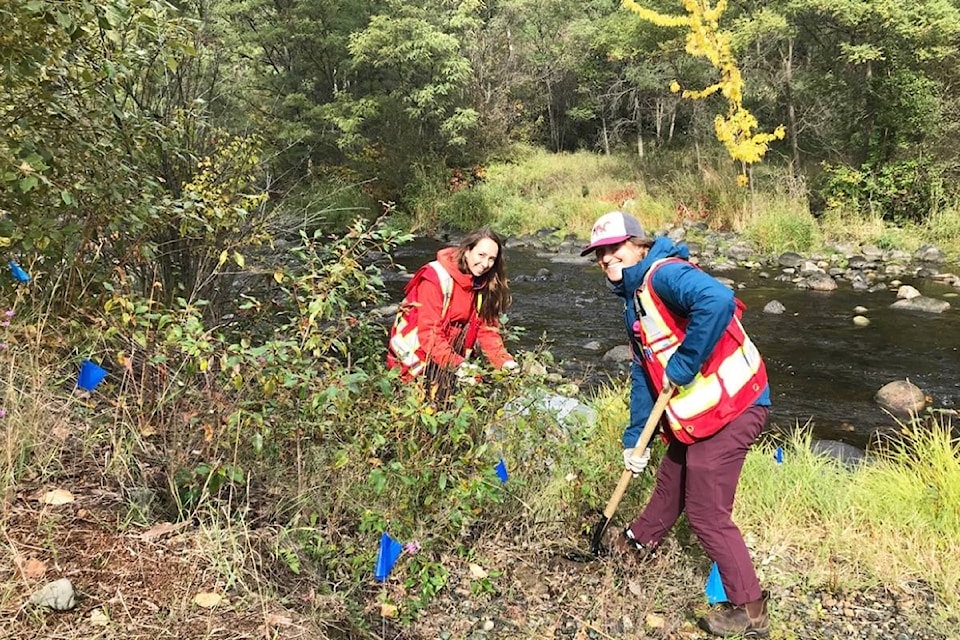The Central Kootenay Invasive Species Society (CKISS) is leading a three-year restoration project at Beaver Creek Provincial Park to improve wildlife habitat and to reduce erosion along the creek bed.
With the help of volunteers from J.L. Crowe Secondary School and Selkirk College, invasive plants were mechanically removed earlier this month and the area was replanted with native trees and shrubs.
“This project to improve wildlife habitat at the park has truly been a team effort,” says Laurie Frankcom, CKISS Education Program Coordinator.
“We could not have done it without the support from BC Parks staff, keen students, teachers, our partners and our funders,” she explained. “The natives that we planted at the park have been given a good start and we are hopeful that they will survive over winter.”
In early October, the society led a field trip at the park for Grade 11 environmental science students from Crowe.
Students participated in a variety of activities to expose them to the topics of ecology, biodiversity, and invasive versus native species. Every student had a chance to assist with restoration efforts by putting on their gardening gloves and planting a variety of native shrubs, plants and trees.
Students also hand watered the newly planted shrubs and discussed the ecological and cultural value of the native species.
Selkirk College students from the Environment and Geomatics department also assisted CKISS staff at the restoration site a few weeks ago, by digging out the following non-native plants: spotted knapweed, hoary alyssum, common tansy, mullein, ribwort plantain and garden sorrel.
Volunteers then replanted the area with the following native species: red-osier dogwood, mountain alder, Oregon grape, Saskatoon, choke cherry, cottonwood, snowberry, Nootka rose and baldhip rose.
Invasive plants are non-native trees, shrubs and herbaceous plants that become well established because they do not have any natural predators or controls.
These introduced species spread quickly and out-compete native vegetation, which reduces biodiversity, affecting fragile ecosystems.
Beaver Creek Provincial Park has a variety of invasive plants on site, which are impacting the habitat of species at risk such as the western skink, North American racer and northern rubber boa.
The restoration endeavor is funded by Environment Canada’s Eco Action Community Funding Program and Columbia Basin Trust.
CKISS staff and volunteers will revisit the site in 2020 to continue with restoration activities and monitor the site for plant succession.
For more information, contact Laurie Frankcom, Central Kootenay Invasive Species Society, at 844.352.1160 ext. 208 or lfrankcom@ckiss.ca
CKISS is a non-profit society that delivers education and awareness programs, and promotes coordinated management efforts of invasive species in the Regional District of Central Kootenay as well as Areas A and B in the Regional District of Kootenay Boundary.
CKISS acknowledges the support of its funders, including the Columbia Basin Trust, and Environment Canada’s Eco Action Community Funding Program.
“CKISS appreciates the staff time and expertise that was provided by BC Park staff and contractors,” Frankcom said. “This project would not be possible without their support. “
